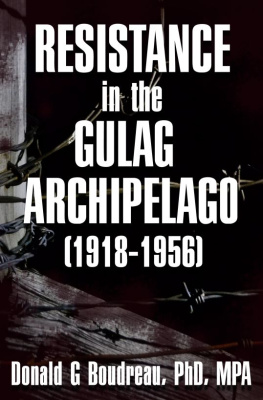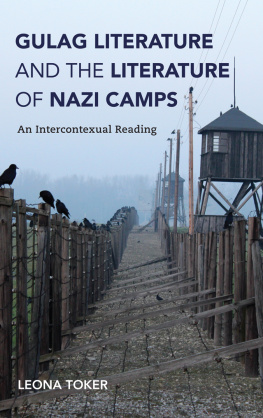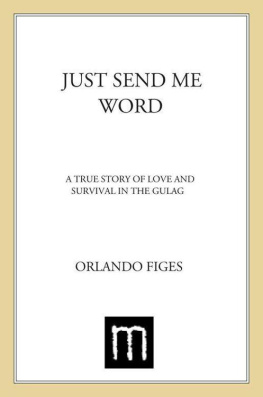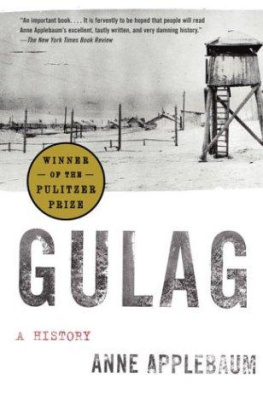
Women of the Gulag
Women of the Gulag
Portraits of Five Remarkable Lives
Paul R. Gregory
HOOVER INSTITUTION PRESS
Stanford University . Stanford, California

The Hoover Institution on War, Revolution and Peace , founded at Stanford University in 1919 by Herbert Hoover, who went on to become the thirty-first president of the United States, is an interdisciplinary research center for advanced study on domestic and international affairs. The views expressed in its publications are entirely those of the authors and do not necessarily reflect the views of the staff, officers, or Board of Overseers of the Hoover Institution.
www.hoover.org
Hoover Institution Press Publication No. 631
Hoover Institution at Leland Stanford Junior University, Stanford, California 94305-6010
Copyright 2013 by the Board of Trustees of the Leland Stanford Junior University
All rights reserved. No part of this publication may be reproduced, stored in a retrieval system, or transmitted in any form or by any means, electronic, mechanical, photocopying, recording, or otherwise, without written permission of the publisher and copyright holders.
For permission to reuse material from Women of the Gulag: Portraits of Five Remarkable Lives , ISBN 978-0-8179-1574-2, please access www.copyright.com or contact the Copyright Clearance Center, Inc. (CCC), 222 Rosewood Drive, Danvers, MA 01923, 978-750-8400. CCC is a not-for-profit organization that provides licenses and registration for a variety of uses.
Efforts have been made to locate the original sources, determine the current rights holders, and, if needed, obtain reproduction permissions. On verification of any such claims to rights in the articles reproduced in this book, any required corrections or clarifications will be made in subsequent printings/editions.
Photo sources appear .
Hoover Institution Press assumes no responsibility for the persistence or accuracy of URLs for external or third-party Internet websites referred to in this publication, and does not guarantee that any content on such websites is, or will remain, accurate or appropriate.
First printing 2013
Manufactured in the United States of America
Library of Congress Cataloging-in-Publication Data
Gregory, Paul R., author.
Women of the Gulag / Paul R. Gregory.
pages cm. (Hoover Institution Press Publication ; No. 631)
Includes bibliographical references and index.
ISBN 978-0-8179-1574-2 (cloth : alk. paper)
ISBN 978-0-8179-1576-6 (ebook)
1. Women political prisonersSoviet UnionBiography. 2. Gulag NKVD. 3. Political persecutionSoviet Union. 4. Concentration campsSoviet Union. 5. PrisonsSoviet Union. 6. Forced laborSoviet Union. 7. Soviet UnionHistory19251953. I. Title. II. Series: Hoover Institution Press publication ; 631.
DK268.A1G724 2013
.45092520947dc23 2012045817
Digital Book Conversion by
www.metrodigi.com
Contents
Preface

The Video can not be reproduced
Women of the Gulag is my third book on political repression under Soviet socialism. My first, Terror by Quota: State Security from Lenin to Stalin (Yale University Press, 2009), analyzed how Lenin, Stalin, and their successors used the political police in a systematic way to repress the citizenry. But the faces of the victims became lost in the horrendous statistics and the incredible numbers of human tragedies. My second book was Politics, Murder, and Love in Stalins Kremlin: The Story of Nikolai Bukharin and Anna Larina (Hoover Institution Press, 2010). In it, I used Stalins most prominent victimsBukharin and his wife, Annato give human faces to his top political rivals.
Women of the Gulag is based on an often overlooked point: most of Stalins victims were quite ordinary people. Only a tiny percentage belonged to the political elite, like Bukharin. Women of the Gulag tells the stories of ordinary women and reveals how adversity can make ordinary people do extraordinary things.
To truly understand Stalins terror and its impact on Russian society and history, we must see the faces of the victims up close. We must follow a peasant girl growing up while confined to a special settlement tucked away in the remote Urals. We must observe the life of an engineers wife and family in Eastern Siberia as ordinary rail accidents somehow become acts of sabotage. We must sit with the teenage sister-in-law of a high party official in a Sukhumi mansion as the secret police close in on family and friends.
Not all the stories of Women of the Gulag are of ordinary women and their families coping with tragedy. Under Stalin, the dividing line between victim and executioner was razor-thin. More than a third of the leading executioners were executed themselves. We see repressors turned into the repressed as we visit the luxurious villas, dinner parties, literary salons, and vacation resorts of the wives of Stalins executioners, and we see their horror as they grow increasingly aware that they are about to cross that line.
Women of the Gulag tells the stories of five women and their families. By Gulag I mean more than the barbed wire, camps, and prisons which the term usually conjures up. Instead, the Gulag refers to a state of mindto the knowledge that anyone and everyone could be shot, jailed, or exiled as the victim of mass insanity and hysteria originating from somewhere above. In this topsy-turvy world, a wrong word or association becomes a crime against the state punishable by the highest measure of social defense, execution. Neighbors and friends are potential informants. A false move at work becomes deliberate sabotage. The camp system into which enemies of the people poured was simply the end stage of the world of the Gulag, reserved for enemies who escaped the anonymous execution pits.
The opening of the Soviet archives in the 1990s made possible a new scholarly literature that is completing our understanding of the Gulag. This literature instructs us on the size and scope of the Gulag, as in Oleg Khlevniuks The History of the Gulag: From Collectivization to the Great Terror (Yale University Press, 2004) and Anne Applebaums Gulag: A History (Doubleday, 2003). Its human costs are explored by Norman Naimark in Stalins Genocides (Princeton University Press, 2011) and its use as an economic institution is the subject of essays in The Economics of Forced Labor (Hoover Institution Press, 2003), which I edited with Valery Lazarev. Jrg Baberowski describes how Stalin and his henchmen used political repression to serve their ends in Verbrannte Erde: Stalins Herrschaft der Gewalt (C. H. Beck, 2012) while Stephen Cohen delves into the impact on civilian society in The Victims Return: Survivors of the Gulag After Stalin (PublishingWorks, 2010).
I use these archives to visit Stalins office, apartment, and dacha as he and his henchmen set terror in motion. We watch as they sit and draft decrees in the antiseptic bureaucratic language, such as first category enemies of the people, that condemns hundreds of thousands to prison or death. We use the archives to follow these Kremlin orders as they filter down to Stalins loyal executioners, among them the husbands of two of our women of the Gulag.













